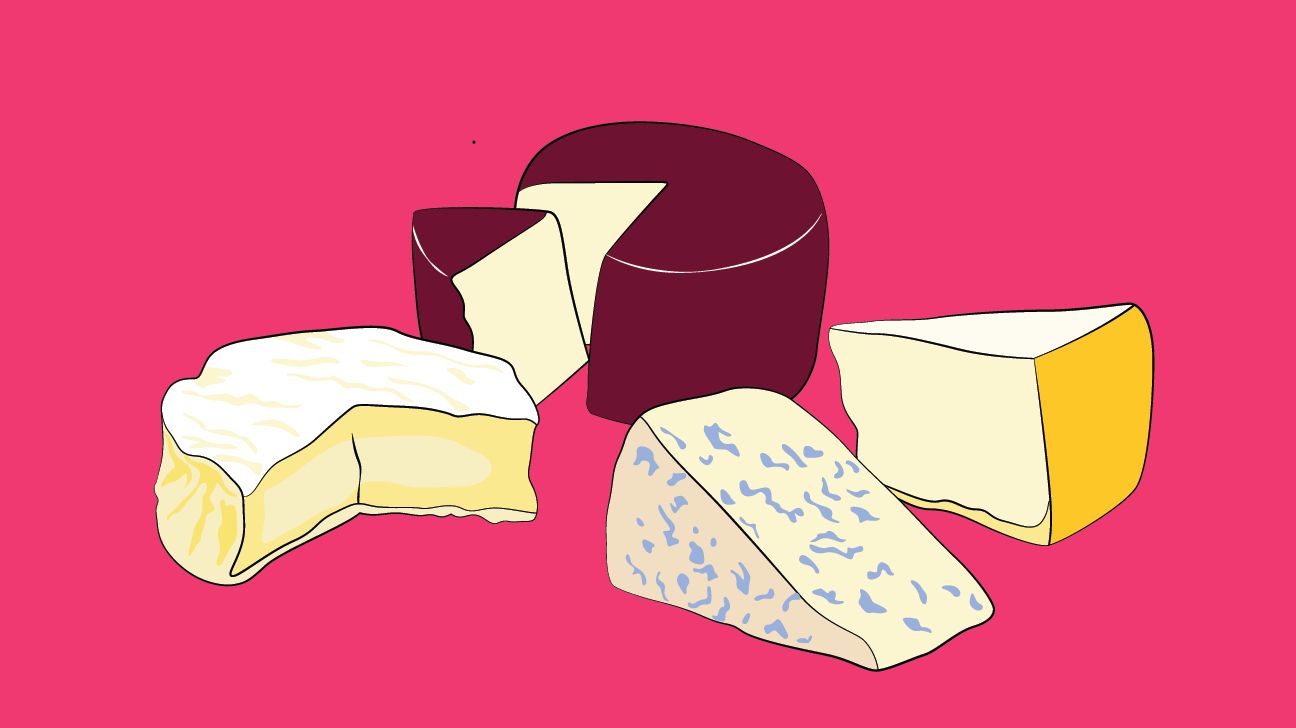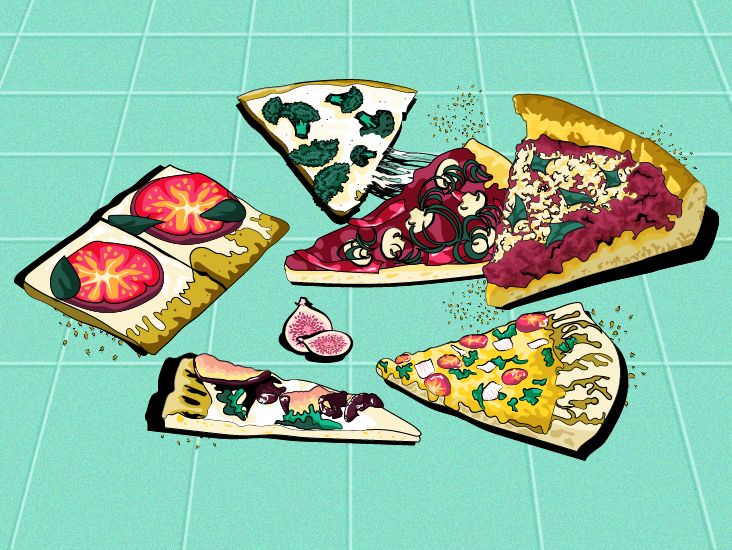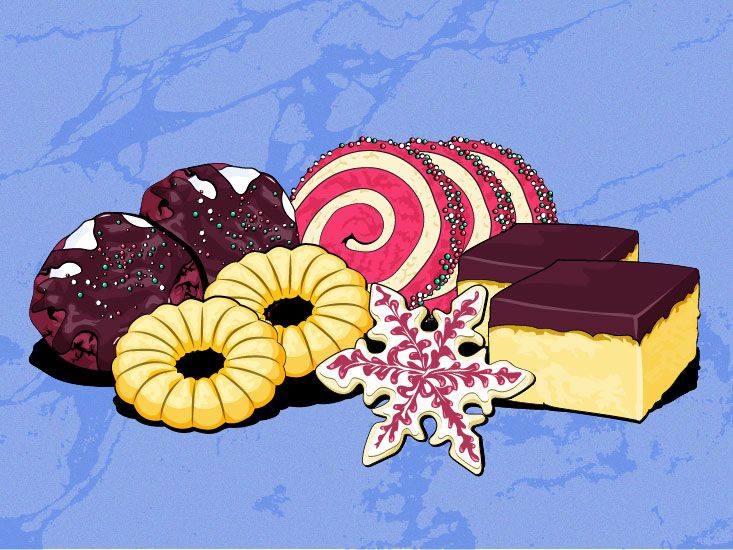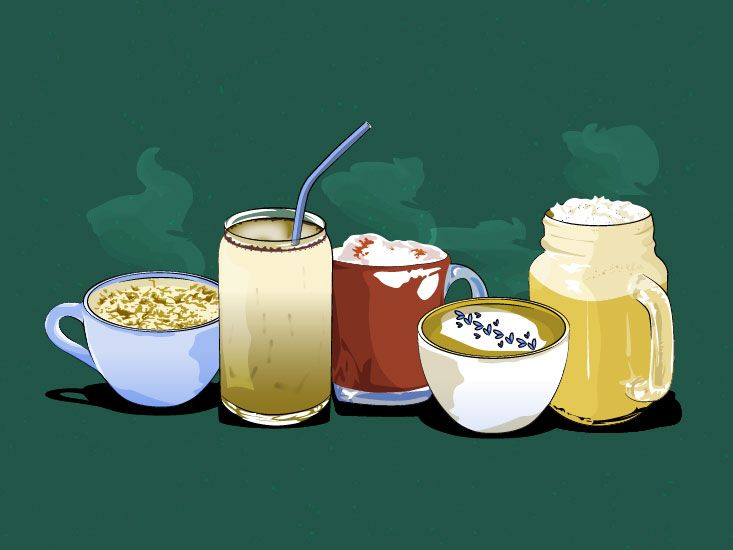
Even for cheese lovers, scanning a store’s cheese counter can be a very overwhelming experience. You know you want to build a cheese board for girls’ night at your place, but truthfully, you don’t know where the heck to start because there are too. many. options.
“Cheese is difficult to classify because there are so many different styles,” explains Michaela Weitzer, cheese pro at Murray’s Cheese in NYC. “Each milk type [cow, goat, sheep] has its own characteristics and flavors; but when a customer comes in looking for help, they usually start with textures they have in mind.”
In layman’s terms, a cheese’s texture is how hard or soft the product is and where it falls on that spectrum. Texture is formed from a combination of factors, including the decisions made during the cheese making process, the pH and acidity levels during that process, and aging time.
Real talk: Calling out cheese styles like “thistle rennet” and “bloomy rind” will only confuse us further. Instead, Weitzer shares her cheesemonger intel to breakdown cheeses into easy-to-understand texture categories (plus, a special highlight on blue cheese!).
Soft cheeses are made using a short production process and little to no aging time. This allows them to retain most of their moisture — and as a result, have that smooth, creamy, and even gooey texture. Soft cheeses often have mild aromas and flavors (citric/lemony, tangy, or almost none at all).
Fresh, rindless cheeses fall into the soft category — from fluffy ricotta, to goat cheese, feta, and burrata. These cheeses make great refrigerator staples because they’re easy to sprinkle on salads and soft enough to spread on crackers or toast.
If you’re pairing with vino, reach for a sparkling wine or crisp white as to not overwhelm the lighter flavors.
Semi-soft cheeses are just a little harder than those in the soft category (makes sense, right?). These cheeses have had between 36 to 45 percent of their water content removed during processing, which is done by cutting the curds (milk curdles) and then pressing all the whey (liquid byproduct of the curdling) out.
The resulting cheese has a texture that’s pliable and easy to cut, but just compact enough that it’s not spreadable — aka, these make great noshing or dessert cheeses.
On the palate, these cheeses still boast that milky freshness since they aren’t aged for very long, with nutty, earthy, and/or tangy flavors. Popular semi-soft cheeses include fontina, mozzarella, Morbier, chevre goat, and Pico.
And just a little firmer than semi-soft, we have (you guessed it): semi-firm! These cheeses feature a slightly lower moisture content than the former and undergo a longer aging process, which lets their flavors ripen and intensify.
Examples of semi-firm cheeses: Gouda, Monterey Jack, provolone, Muenster, and havarti.
They have enough texture to shred and grate, and tend to be the people-pleasers of the cheese board. If you wish to enjoy ’em with wine, these cheeses feature the developed flavors to stand up to light- or medium-bodied reds.
The cheese curds are heated up, cooked, and pressed first, creating a more compact (read: firm) cheese. Firm cheeses retain only a little of their moisture since they are then aged for a bit of time.
The most renowned type of firm cheese is cheddar — a cow’s milk cheese that’s usually off-white in color (or yellow-orange, if food coloring is added).
Cheddar has a sharp, buttery flavor with hints of caramel and butterscotch, and is most loved for its firm texture that also somehow melts in your mouth.
Other firm favorites include: Comte, Edam, Cantal, and Jarlsberg.
Hard cheeses have had most of their moisture (over 50 percent) removed during the production process. These cheeses are also aged for a long period of time, resulting in stronger, more savory flavors and a hard exterior.
While some hard cheeses (like Manchego) work great on a cheese board, cheeses in this category are most loved for their crumbling and grating abilities. Case in point: oven-baked Gruyère potato medallions, Parmigiano-Reggiano on Caesar salad, and Pecorino Romano on your fave Italian pasta dish (yes, we’re hungry now too).
So-called “blue cheese” can range in texture from soft and spreadable to hard and crumbly — but it’s such a polarizing cheese style (you either love it or hate it!) that it gets its own category.
Blue cheese is aptly named for the blue veins running through it. Here’s how it’s made: When the cheese is still in curd form, it’s skewered with a cultured fungus (Penicillium roqueforti or Penicillium glaucum, for those wondering); this allows a blue-green edible mold to grow as the cheese ages.
These veins are what give blue cheeses their rich flavors and pungent aromas (stinky feet!). Some well-known blues: Gorgonzola, Roquefort, Stilton, and Bleu de Gex.
Crafting a meat and cheese spread that’s both pretty and balanced is truly an art form. To really get guests talking (in between bites, that is) you need to hit all the marks with a range of flavors and an inviting presentation.
Here are Weitzer’s expert tips for upping your cheese plate game:
- Cheese: Start with three cheeses in different categories. You can run the gamut with texture (soft, semi-soft/semi-hard, firm/hard) or milk type (cow, sheep, goat), but it’s the array of flavors that makes things memorable. Choose one cheese that is light and tangy, one that is pungent, and one that is aged and nutty.
- Meats: Next, pick two different meats: one thin muscle meat (like prosciutto) and one hard texture meat (like dry salami).
- Accoutrements: Elevate your platter with an assortment of yummy add-ons: honey, jams, marmalades, olives, almonds, dried fruits, and crackers — get creative!
Pro tip: For the ultimate pairing experience, arrange your plate so that the coordinating flavors are next to each other: Light cheese is friends with fruit jam, aged cheese likes salty almonds, and stinky cheese plays nice with pickled veggies.




